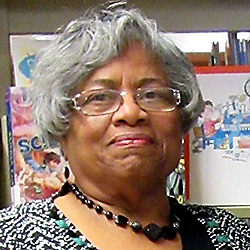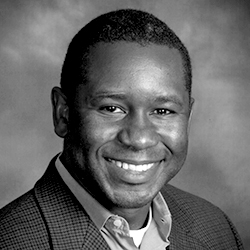
Ernestine Jackson
Ernestine Jackson has worked for more than four decades in equal employment opportunity; today she is frustrated, even heartbroken, when she looks at the racial composition of Peoria and the racial composition of the city hall workforce and contractors with the city.
“If I close my eyes, I can see Mississippi in the 1940s,” she said.
A diverse workforce is not merely “politically correct;” it is an essential tool for driving economic growth. Research supports the link between inequality and the failure of communities to thrive economically. Research also reinforces the link between institutional racism and regional economic stagnation.
Peoria City Council reviewed the composition of the city’s workforce and voted unanimously at a meeting in December to allocate $30,000 for minority recruitment.
Dr. Farris Muhammad, Peoria’s chief diversity and inclusion officer, said this is the first time the city allocated funding for this type of pilot program. It was developed with input from Muhammad, city departments including human resources, police, fire and the city council as well as the Peoria NAACP. Some funds will be used to participate in college job fairs on campuses primarily within a 3- to 4-hour drive from Peoria.
“We are pushing not just for recruitment at entry level positions,” Muhammad said.

Olugbenga Ajilore
Dr. Olugbenga Ajilore, senior economist with Center for American Progress, said Peoria’s allocation of $30,000 for minority recruitment is a positive step, but Peoria must show potential employees that this is a welcoming community.
“People moving to an area is a tool for economic growth, and people need to feel welcomed. The assumption about the Heartland and Midwest is that it’s not good for people of color,” he said. “If you are known as a welcoming city, you see the economic base grow. D.C., New York and Boston are expensive places to live so there are growth opportunities for rural areas.”
People need to see Peoria not just as a place to get a job but as a good place to live, buy a home, do things outside of work, he said.
When communities deny the existence of institutional racism, they close the door on remedies. Economic development strategies must include specific steps for redressing institutional racism.
“Inclusivity is the No. 1 economic development tool,” Ajilore said.
The development of “opportunity zones” is not as effective as inclusivity. Opportunity zones are all about capital gains and tax abatement.
“That’s not sustainable,” he said, stressing that the goal of all economic development organizations should focus on inclusivity.
Jackson can trace and correlate the decline in workforce diversity with Peoria’s economic downward spiral.
She was the EEO officer with the city for eight years in the 1970s and had a staff including an investigator who looked into complaints of discrimination.
“We used to be the second largest city in Illinois. Look at us now,” she said.
When Caterpillar Inc. brought African American families to Peoria, the company would match them with a mentor family, often Ernestine and her husband Don. They would tour the community, looking at schools, housing, restaurants and shopping.
Now, when families come to Peoria for jobs, they look at homes and schools in Dunlap, Germantown Hills and even Mackinaw, Jackson said.
“People fail to understand equality is an economic boon for an entire community,” she said. “Now instead of new families relocating to Peoria, we have all these new taxes added to balance the budget.”
Jackson is both famous and infamous in the annals of Peoria employment opportunity. She is known as the EEO officer who walked onto job sites to confirm firsthand the diversity among city contractors. She almost stopped work on the Peoria Civic Center in the 1970s because of a contractor’s lack of a diverse workforce.
“Lou Berger (then chairman of the civic center authority board) was in my office immediately, and we worked it out,” said Jackson.
She readily and repeatedly credits the city’s past success by crediting the mayors, city managers and city councils and others she worked with. Names included Dick Carver, Bob Wright, Jim Daken, John Gibson, Jim Bateman, Dick Neumiller. On the federal level, she cited support for the work coming from Everett Dirksen, Bob Michel and Ray LaHood.
“They had the heart and the commitment for equal opportunity,” she said. “There were more African Americans in top management then than there are today. There were more women department heads. The city looks totally different today than it did in the late 1970s.”
She developed an equal opportunity program and met regularly with department heads to discuss potential openings, who was approaching retirement, what positions might be opening.
“We started recruiting before positions were open or posted,” she said.
Jackson said wrong, costly decisions are made unless there is diversity in the policy discussion.
Today, Muhammad has no staff and is the sole employee in the department of diversity and inclusion.
“If we hire an attorney to handle lawsuits, that hire is not questioned. If we hire more engineers to do road work, that is not questioned.
We have to place the same value on hires for workforce diversity,” he said.
Peoria, population 115,000, has only one employee in the diversity and inclusion department. Other smaller cities have larger diversity departments. In Dubuque, Iowa, population 58,000, the department has six employees; Evanston, population 74,000, the department has three employees; Champaign, population 87,000, the department has four employees; Ashville, N.C., population 92,000, the department has four employees.
Barriers for African Americans, immigrants and the LGBT community block economic growth, Ajilore said, noting that Peoria’s $30,000 investment in minority recruitment is a first step. Potential recruits need to see Peoria is a community that welcomes and supports diversity.

Recent Comments